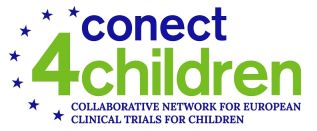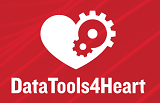Scientific projects
On this page, you will find the ongoing scientific projects!

AI4Cardiology is a collaborative data science effort performed by a multidisciplinary team to explore the potential of machine learning in the field of cardiology. By delving deep into complex, real-world cardiac datasets, we aim to uncover valuable insights and positively impact clinical decision-making.
Time span: 2021-2024
Research line: Methods in Medical Informatics
Staff: Tseko Yordanov, Anita Ravelli, Ameen Abu-Hanna

The AI4Hf project focusses on co-design, development, evaluation and exploitation of integrative and thrustworthy artificial intelligence solutions for personalized heart failure risk-assessment. These tools will be trained using large-scale complementary multi-source cardiovascular data including cardiac imaging, -biomarkers, electrocardiography and free text data. Within the project, great emphasis is placed on the concept of trustworthy and inter-dicilplinary tool design, to ensure that developed tools are trusted, approved and deployed in a real world setting and providing clear benefit for patients, cardiologists, physicians and health-care providers.
The consortium is led by Amsterdam UMC and Amsterdam UMC focusses on defining requirements for the development of trustworthy AI, model development and explainability.
Research line: Methods in Medical Informatics
Staff: Giovanni Cinà, Machteld Boonstra
Website: www.ai4hf.com

c4c (conect4children) is a large collaborative European network that aims to facilitate the development of new drugs and other therapies for the entire paediatric population. It is a pioneering opportunity to build capacity for the implementation of multinational paediatric clinical trials whilst ensuring the needs of babies, children, young people and their families are met.
c4c is committed to meeting the needs of paediatric patients thanks to a novel collaboration between the academic and the private sectors, which includes 35 academic and 10 industry partners and around 500 affiliated partners. c4c endeavours to provide a sustainable, integrated platform for the efficient and swift delivery of high quality clinical trials in children and young people across all conditions and phases of the drug development process. The project strives to bring innovative processes to all stages of clinical development by generating a new model of organization and of the clinical development process.
Research line: Reusable health data
Staff: Nirupama Benis, Ronald Cornet
Website: conect4children
Unstructured data is guesstimated to account for 80% of all patient data. Nonetheless, unstructured data is currently severely underused in healthcare because it is noisy, hard to interpret, and privacy-sensitive. In this project, we develop human-centric responsible Natural Language Processing (NLP) and Machine Learning (ML) methods that will allow clinicians and patients to safely tap this unstructured data’s potential.
Our proposed methods have a focus on the Dutch healthcare ecosystem and are tailored to support research, education, and patient care by promoting explainable prediction models, ensuring fairness and patient privacy, preventing bias, and coping with data scarcity.
The CaRe-NLP project kicks-off in April 2024 and will run for 5 years until April 2029.
Research line: Methods in Medical Informatics en Natural Language Processing
Staff: Nishant Mishra, Heloisa Oss Boll, Xinlan Yan, Iacer Coimbra Alves Cavalcanti Calixto, Ameen Abu-Hanna
Website:https://nlp4health-lab.github.io/projects/carenlp_project/
Patients admitted to the Intensive Care Unit (ICU) are often treated with multiple high-risk medications. Yet, our knowledge of safety and effectiveness of pharmacotherapy in ICU patients is limited. Consequently, over- and underprescribing of indicated medications, and inappropriate choice of medications, frequently occur in ICU patients.
Medication Recommender Systems (MRS) are novel systems that can assist physicians with the selection of appropriate medications and with flagging inappropriate medications by uncovering patterns and exploiting similarity among patients’ and medications’ data. MRS can provide personalized suggestions, which are inherently more useful, relevant and efficient.
The main objectives of this project are:
1) building a proof-of-concept MRS for Amsterdam UMC ICU patients, and
2) investigating its potential value compared to the current rule-based CDSS.
We will leverage both rule-based methods using the problem list, and machine learning, deep learning, and natural language processing to provide personalized suggestions by uncovering patterns in the medication data, problem-list data, laboratory findings, and notes.
Research line: Methods in Medical Informatics
Staff: Chao Zhao, Iacopo Vagliano, Ameen Abu Hanna, Joanna Klopotowska
This project focuses on improving medication safety for patients in the Intensive Care Unit (ICU). We aim to reduce high-risk medication interactions and medication-related kidney complications more efficiently. We seek to achieve this by establishing a strong IT-foundation for a learning medication safety system that enables ICU-physicians and hospital pharmacist in monitoring medication safety and addressing medication safety risks.
This project is of great importance to patients and their families as it aims to reduce the risks of complications related to medications. It is also highly significant for ICU physicians and hospital pharmacists as it aims to strengthens their collaboration, saves time, and enhances the effectiveness of quality of care interventions.
The envisioned learning medication safety system will utilize data from electronic patient record systems of ICU departments. This project will deliver implementation toolkits for Dutch ICUs, which will be distributed nationwide through scientific associations. The project is funded by ZonMW with in-kind contribution by NICE Research&Support.
Timespan: 2025-2027
Research line: PharmacoInformatics
Staff: Joanna Klopotowska, Anne Langermans, Arthur Wasylewicz, Charlotte Mittendorf
Website: Data-gedreven medicatieveiligheid op de Intensive Care (VIMP)| Zo

Within the datatools4heart project, we work on the co-creation, development and demonstration of a comprehensive, federated, privacy-preserved cardiology data toolbox. This toolbox includes standardized data ingestion and harmonization tools, multilingual natural language processing and federated machine learning and data synthesis methods. Additionally, with the development of a public data catalog combined with virtual assistants, scientist and clinicians can navigate easily through large-scale multi-source cardiology electronic health record data, while complying to the European regulations and data standards.
Amsterdam UMC participates as one of the clinical sites, focusing on data harmonization, adoption of a federated learning platform and free-text analysis using natural language tools.
Research line: Methods in Medical Informatics
Staff: Noman Dormosh, Iacer Coimbra Alves Cavalcanti Calixto, Ameen Abu-Hanna, Machteld Boonstra
Website: www.datatools4heart.eu
The EQUAL study, part of the ERA-EDTA registry, is an European prospective cohort study in elderly patients in chronic kidney disease stage 4. EQUAL aims to study how the level of renal function, and uraemic signs and symptoms can be used to determine when dialysis should be initiated in elderly patients.
Research line: Epidemiology of kidney disease
Staff: Nick Chesnaye, Megan Astley, Kitty Jager
Website: EQUAL study website.

Today, around 7000 rare diseases affect more that 300 million people worldwide. The majority of rare and ultra rare diseases still lack a therapeutic option. To address these important issues, the European Rare Diseases Research Alliance (ERDERA) has been set up to build on the advancements made by former EU-funded projects.
ERDERA will continue developing a robust and comprehensive data and expertise infrastructure and innovative clinical research services -with a focus on advanced therapies-, funding new research projects, providing training and expediting translation of findings into tangible solutions for patients.
Research line: Reusable Health Data
Staff: Nirupama Benis, Ronald Cornet, Andra Waagmeester, Noah van Brummelen
Model explainability and transparency are requirements in healthcare applications. This is especially important when proposing models for healthcare that consume or generate natural language inputs such as free-text clinical notes. The major trend in explainability research in artificial intelligence resorts to the post-hoc explainability of black-box models, which are methods that try to approximate how a black-box model produces their predictions. However, we would like to build models that are inherently explainable and transparent. In this project, we propose not only post-hoc explainability methods for NLP, but also NLP methods that are explainable by design.
Research line: Methods in Medical Informatics
Staff: Nishant Mishra, Iacer Coimbra Alves Cavalcanti Calixto, Ameen Abu-Hanna

The HemaFAIR project, established through international expert collaborations, aims to enhance the scientific profile of The Cyprus Institute of Neurology and Genetics (CING) and improve the position of Cypriot researchers in biomedical informatics and rare hematological diseases with a focus on the use of FAIR data and standards in research and education.
The project will involve a comprehensive training programme and capacity-building and networking activities such as summer schools, workshops, webinar and transferable skill lectures taught by experts in rare hematological diseases, biomedical informatics, ethics and regulatory issues. In addition, HemaFAIR will raise the profile of early-career researchers via the development of a mentoring programme, short term staff exchanges and collaborative research projects between EU partners and the CING.
Through a pilot study, it will demonstrate the FAIRification process on two platforms for haemoglobinopathies—rare hematological diseases particularly prevalent in Cyprus—maximizing the project's impact on the local community.
Research line: Reusable health data
Staff: Ronald Cornet, Martijn Kersloot
Website: HemaFAIR

People with multimorbidity suffer from suboptimal pharmacotherapy due to insufficient knowledge to guide prescribing decisions. Leveraging routinely collected data in Electronic Health Records (EHRs) using machine learning (ML), have been widely advocated to close this knowledge gap and provide missing insights on safety and effectiveness of drugs. However, EHR data suffer from many quality issues. In addition, there are still significant limitations in the introduction of ML models to support in prescribing decisions, due to the lack of transparency in how model outputs are generated (the "black box” dilemma), and lack of logical reasoning (models not informed by causal domain knowledge).
Therefore, LEAPfROG aims for scientific breakthrough in ML application in healthcare by addressing the aforementioned limitation and creating a medication safety learning system. A system powered by novel ML-powered tools capable to provide trustworthy and explainable causal suggestions. The value of the ssystem will be demonstrated via clinically relevant and urgent use case of drug-induced kidney diseases (DIKD) in patients with chronic kidney disease (CKD). Patients with CKD are amongst the most complex and multimorbid. By providing missing insights on DIKD in patients with CKD via PIL, LEAPfROG will contribute to safer and more effective pharmacotherapy in these patients. Aiming to increase quality of life of patients with CKD and decrease healthcare costs related to medication harm
Timespan: 2022 - 2027
Research line: PharmacoInformatics
Staff: Joanna Klopotowska, Birgit Damoiseaux, Daniel Fernandez Ilaneza, Joris Lieverse, Izak Yasrebi de Kom
Website: LEAPfROG

The LEARN-FAIR project intends to foster cooperation and knowledge exchange among FAIR (Findable, Accessible, Interoperable, and Reusable data) trainers by establishing a Dutch FAIR Trainers Community. Additionally, the project focuses on identifying training needs for researchers and data stewards, as well as existing educational materials, in order to develop new Open Educational Resources. To ensure that these materials meet the (future) needs of the community, the LEARN-FAIR project combines empirical research with active community engagement.
Research line: Reusable health data
Staff: Ronald Cornet, Martijn Kersloot, Myrthe van Heerde
Website: LEARNFAIR
MediSpeech will present an integrated, digital IT ecosystem for automated medical reporting with proven added value in the clinical practice, in the shape of platform infrastructure that supports the transformation of the organisation-centred healthcare model into a patient/doctor-centred model.
The proposed solution will go along with healthcare’s mission of bettering patient care through the use of assistive, digital tools. This will be achieved through the integration of the innovative technologies proposed with the reference to the current SotA:
(1) AI-powered speech recognition for less-error rate and accurate dealing with the idiosyncrasies of an individual’s speech patterns,
(2) Data interoperability and harmonisation allowing combining multiple services with complementary functionalities,
(3) Technology-advanced clinical decision support system based on hybrid recommendations,
(4) Medical reporting providing past data-driven knowledge needed to boost effectiveness and reduce medical complication rates while attaining performance targets.
Research line: Methods in Medical Informatics and Natural Language Processing
Staff: Iacer Coimbra Alves Cavalcanti Calixto, Ameen Abu-Hanna, Henk Marquering, Azam Nurmohamed
Similar to the NICE FAIR project, in this project we test the feasibility of Federated Learning (FL), a decentralized machine learning technique. It is a potential solution to the question: "How can we analyze health data without needing to gather that data centrally?".
We will test FL in the context of NICE’s benchmarking activities, which compares mortality rates of all Dutch ICUs based on the APACHE IV case-mix adjustment. We will examine the performance of NICE's yearly APACHE IV recalibration when calculated centralized (current practice) versus decentralized (FL) and investigate its effect on the position of ICUs in funnel plots. This decentralization is recreated virtually, by creating partitions of the NICE's database, simulating separate hospital databases.
This project should result in a first assessment of the use of FL as a decentralized data analysis method for the NICE, opening the door for further research and benchmark opportunities.
Research lines: Quality of Care (IT Systems) & Reusable Health Care
Staff: Ferishta Raiez, Sebastian van der Voort, Ronald Cornet, Nicolette de Keizer
In the ICU, 71% of the patients receive antibiotics. Of these antibiotics, 30% to 60% is prescribed unnecessary, inappropriate, or suboptimal.
Audit & Feedback is proven to be effective in stimulating quality improvement, therefore the NICE2Improve dashboard was developed. This dashboard includes actionable quality indicators and a toolbox with suggestions of improvement actions to support ICU staff on how they can increase appropriate antibiotics use. The purpose of this research is to pinpoint areas where specific ICUs might experience barriers to quality improvement, to devise a method for creating a tailored toolbox, and to evaluate the effectiveness of the tailored toolbox in enhancing antibiotic use in the ICU.
Research line: Quality of care (IT systems)
Machine learning (ML) models have made remarkable advancements in analyzing medical data, yielding impressive results. However, a significant limitation lies in their performance, which is primarily optimized for data from the training distribution and can degrade when the model is used on a different distribution. As we aim to deploy these ML models in real-world healthcare scenarios, ensuring their reliability becomes of utmost importance. Consequently, it is crucial to devise a method that can effectively detect samples that lie outside the training distribution before making potentially erroneous predictions on them. By doing so, we can proactively avoid erroneous predictions on out-of-distribution (OOD) data.
In this project, we address this specific challenge within the context of medical tabular data. Our primary objective is to investigate and develop a robust method for identifying OOD data points in real time. By developing effective solutions to detect OOD data in medical tabular datasets, we can elevate the reliability and applicability of ML models in real-world healthcare settings. This could potentially lead to improved patient outcomes and enhanced decision-making processes, as healthcare professionals can trust the model's predictions and be alerted when encountering unfamiliar or OOD cases. Ultimately, our research aims to bridge the gap between ML advancements and practical healthcare implementation, fostering a more reliable and secure healthcare AI ecosystem.
Research line: Methods in Medical Informatics
Staff: Giovanni Cinà, Mohammad Azizmalayeri, Ameen Abu-Hanna
This project is a consortium with the medical device company Pacmed and it aims at supporting the decisions of intensive care clinicians dealing with treatments of variable length. Such treatments are difficult to administer because it is hard to understand when is the optimal time to stop treatment; for instance with mechanical ventilation, it can be hard to judge when the patient can be safely extubated. The work package entrusted to KIK concerns the study of causal inference techniques to assess the effect of such dynamic treatments. These solutions will then be tested on real-world data leveraging the ongoing collaboration between Pacmed and the Santeon hospitals, enabling a quick iteration and a speedy trajectory towards the improvement of current hospital processes.
Timespan: 2022-2026
Research line: Methods in Medical Informatics
Staff: Giovanni Cinà, Sagar Simha, Ameen Abu-Hanna

PaLaDIN aims to accelerate the development of effective treatments and to establish best-practice diagnosis and care for neuromuscular disease patients worldwide by harnessing patient input and patient-generated health data to improve decision making, outcomes and healthcare solutions. To this end, PaLaDIn will develop and operate a collaborative, inclusive system that collects patient-reported outcome and experience measures, and aligns these with clinical data to advance treatments, diagnosis, and care by providing holistic, patient-level data.
Research line: Reusable health data
Staff: Nirupama Benis, Ronald Cornet, Martijn Kersloot, Lilli Schuckert
For health outcomes, socioeconomic status (SES) is an important determinant. Generally, a lower SES is associated with more adverse healthcare outcomes. It is unclear whether this phenomenon is present in patients admitted to the intensive care unit (ICU), especially in The Netherlands.
Therefore, this nationwide observational cohort study will investigate SES in the total Dutch ICU population and across regions, the association between SES and (hospital/long-term) mortality, and its effect on individual estimated mortality risks. Depending on the outcomes, we will try to improve the case-mix model (APACHE IV) for estimating individual mortality risks and examine its influence on benchmarking Dutch ICUs. We will use a composited (occupation, income, education) SES score per household and per postal code to identify possible differences between these scores.
Research line: Quality of care (IT systems)